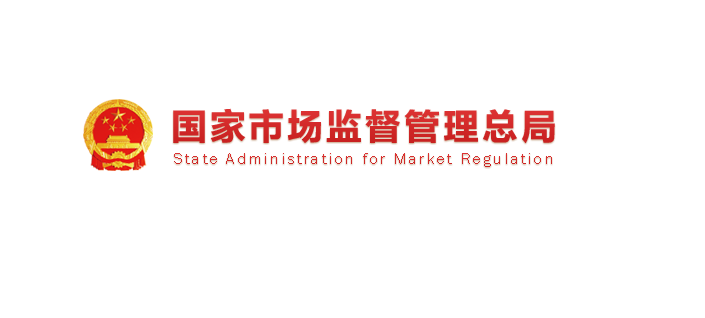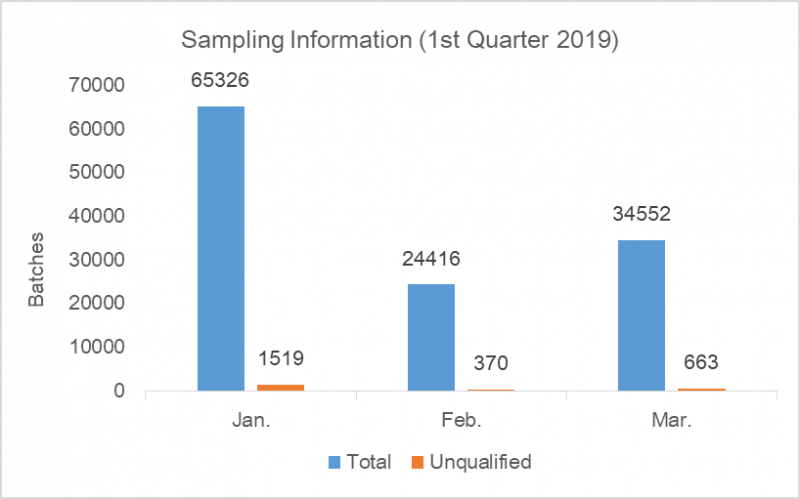Global Foodmate summarized the information on the sampling inspection of food and food-related products issued by the State Administration of Markets Regulations and the local (provincial, autonomous region, municipality) market supervision departments from January to March 2019. Through summary analysis, the following conclusions were drawn.
1. The overall situation
In the first quarter of 2019, the national and local (provincial, autonomous region, municipality directly under the central government) market supervision and management departments inspected 124,294 batches of food and food-related products nationwide, including 121,742 batches of qualified samples and 2,552 batches of unqualified samples. The rate was 97.9%, which was the same as the same period in 2018.
The sample inspections for each month in the first quarter are shown in Figure 1 below:
2. Analysis of various types of food sampling
The product types with large sampling volume are meat and meat products, vegetables and their products, aquatic products and their products, and the sampling amount is more than 10,000 batches. From the results of the sampling test:
a. Unqualified samples were not detected: milk and dairy products, cocoa and roasted coffee products.
b. The pass rate of sampling is higher, above 99%:frozen food, canned food, beans and soy products, grain and its products, tea and related products, health food, candy and chocolate products, food additives, special dietary food, edible oil And its products, fruits and their products, sugar.
c. The failure rate is low, less than 97%: vegetables and their products, convenience foods, food and beverage products, food-related products.
3. Analysis of the reasons for unqualification
The main problems found in the first quarter of the unqualified products were microbial exceeding the standard, over-range use of food additives, residues of agricultural and veterinary drugs, and quality indicators did not meet the standards.
a. The microbial exceeding the standard accounted for 22.1% of the total unqualified items. The outstanding problem items are coliform bacteria, total number of colonies, Pseudomonas aeruginosa and mold. Foods with excessive microbial counts mainly involved food and beverage products, beverages, meat products, convenient food, etc.
b. Over-range and over use of food additives accounted for 21.5% of the total unqualified, mainly for the illegal use of raising agents, bleaching agents, preservatives, sweeteners, involving food and beverage products, vegetable products, convenience foods and other categories.
c. Pesticide residues exceeded 16.2% of the total unqualified, and the food categories involved were mainly vegetables and fruits.
d. The veterinary drug residue exceeded 15.0% of the total unqualified, and the unqualified food categories mainly included aquatic products, livestock and poultry meat, and fresh eggs.
e. The quality index does not meet the standard account for 13.3% of the total unqualified, mainly related to indicators such as peroxide value, alcohol content and acid price.
Please note: Original article of Global Foodmate of Information Service and Business Department, please indicate the source from the Global Foodmate if reprint.



